Dacia Spring vs Honda Jazz – Which one offers the better deal?
Both models have their strengths – but which one suits you more?
Compare performance, efficiency, price and space directly: Dacia Spring or Honda Jazz?
Costs and Efficiency:
Price and efficiency are key factors when choosing a car – and this is often where the real differences emerge.
Dacia Spring has a decisively advantage in terms of price – it starts at 14500 £, while the Honda Jazz costs 23100 £. That’s a price difference of around 8615 £.
Engine and Performance:
Power, torque and acceleration say a lot about how a car feels on the road. This is where you see which model delivers more driving dynamics.
When it comes to engine power, the Honda Jazz has a decisively edge – offering 122 HP compared to 65 HP. That’s roughly 57 HP more horsepower.
In acceleration from 0 to 100 km/h, the Honda Jazz is convincingly quicker – completing the sprint in 9.40 s, while the Dacia Spring takes 13.70 s. That’s about 4.30 s faster.
In terms of top speed, the Honda Jazz performs noticeable better – reaching 175 km/h, while the Dacia Spring tops out at 125 km/h. The difference is around 50 km/h.
There’s also a difference in torque: Honda Jazz pulls significantly stronger with 253 Nm compared to 125 Nm. That’s about 128 Nm difference.
Space and Everyday Use:
Whether family car or daily driver – which one offers more room, flexibility and comfort?
Seats: Honda Jazz offers a bit more seating capacity – 5 vs 4.
In curb weight, Dacia Spring is distinct lighter – 1013 kg compared to 1302 kg. The difference is around 289 kg.
In terms of boot space, the Dacia Spring offers minimal more room – 308 L compared to 304 L. That’s a difference of about 4 L.
In maximum load capacity, the Honda Jazz performs somewhat better – up to 1205 L, which is about 201 L more than the Dacia Spring.
When it comes to payload, Honda Jazz evident takes the win – 388 kg compared to 302 kg. That’s a difference of about 86 kg.
Who comes out on top?
Overall, the Honda Jazz shows itself to be is largely superior and secures the title of DriveDuel Champion.
It convinces with the more balanced overall package and proves to be the more versatile choice for everyday use.
 @ Honda Motor Co., Ltd.
@ Honda Motor Co., Ltd.
Honda Jazz
Dacia Spring
The Dacia Spring stands out as an affordable and environmentally friendly option in the electric vehicle market, combining practicality with a compact design ideal for urban settings. Its minimalist interior, while basic, provides all the essential features needed for a comfortable drive, reflecting its cost-effective approach. The vehicle's performance suits city driving, making it an appealing choice for those seeking an entry-level electric car.
details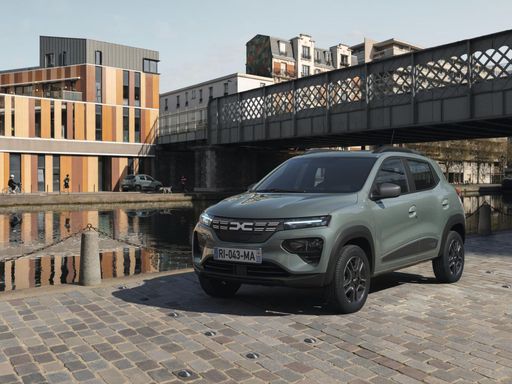 @ Dacia / Renault Group Media
@ Dacia / Renault Group Media
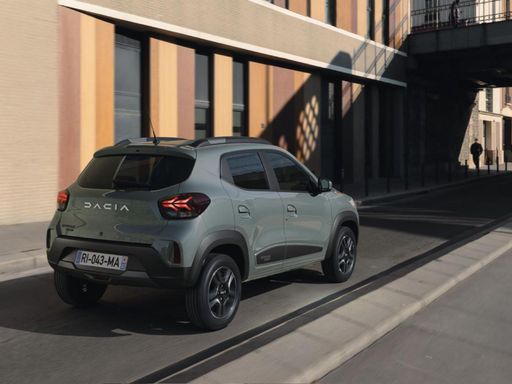 @ Dacia / Renault Group Media
@ Dacia / Renault Group Media
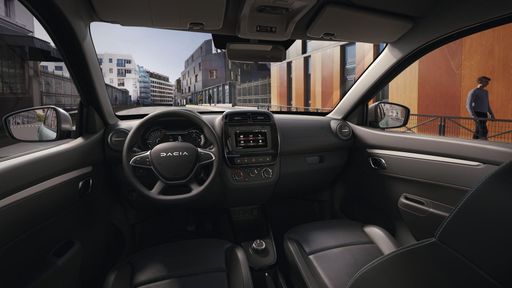 @ Dacia / Renault Group Media
@ Dacia / Renault Group Media
Honda Jazz
The Honda Jazz is a supremely practical small hatch that hides clever packaging and more usable space than it lets on, with friendly styling and an unfussy charm. It’s economical to run, easy to park and perfect for buyers who want reliable, versatile daily motoring without the hassle.
details @ Honda Motor Co., Ltd.
@ Honda Motor Co., Ltd.
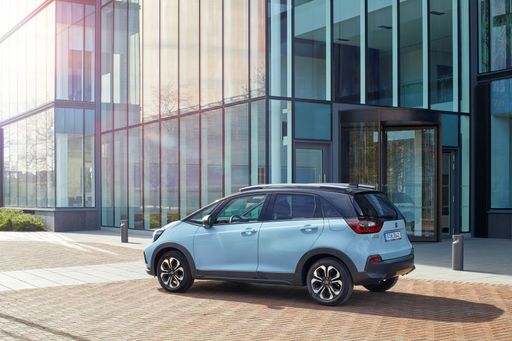 @ Honda Motor Co., Ltd.
@ Honda Motor Co., Ltd.
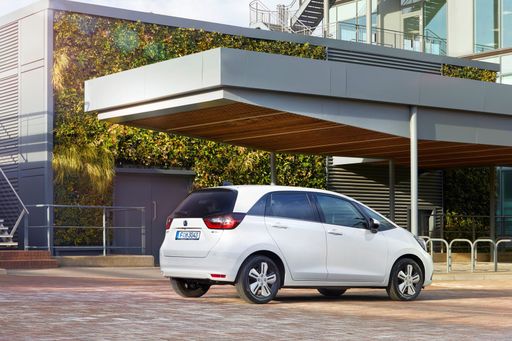 @ Honda Motor Co., Ltd.
@ Honda Motor Co., Ltd.
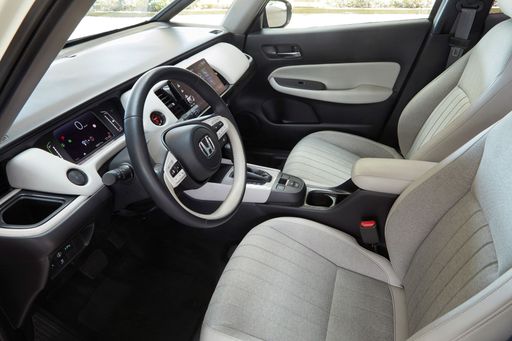 @ Honda Motor Co., Ltd.
@ Honda Motor Co., Ltd.
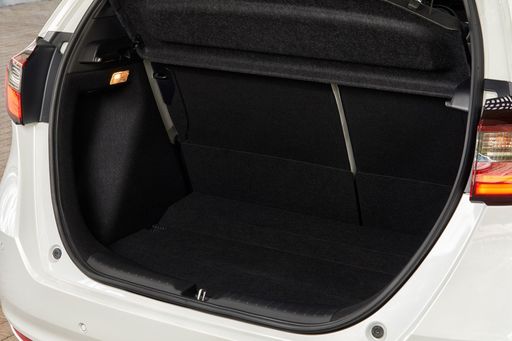 @ Honda Motor Co., Ltd.
@ Honda Motor Co., Ltd.
 @ Dacia / Renault Group Media
@ Dacia / Renault Group Media
|
 @ Honda Motor Co., Ltd.
@ Honda Motor Co., Ltd.
|
|
|
|
Costs and Consumption |
|
|---|---|
|
Price
14500 - 17100 £
|
Price
23100 - 26700 £
|
|
Consumption L/100km
-
|
Consumption L/100km
4.5 - 4.8 L
|
|
Consumption kWh/100km
13.2 - 14.1 kWh
|
Consumption kWh/100km
-
|
|
Electric Range
225 - 228 km
|
Electric Range
-
|
|
Battery Capacity
26.80 kWh
|
Battery Capacity
-
|
|
co2
0 g/km
|
co2
102 - 108 g/km
|
|
Fuel tank capacity
-
|
Fuel tank capacity
40 L
|
Dimensions and Body |
|
|---|---|
|
Body Type
SUV
|
Body Type
Hatchback
|
|
Seats
4
|
Seats
5
|
|
Doors
5
|
Doors
5
|
|
Curb weight
1013 - 1050 kg
|
Curb weight
1302 - 1320 kg
|
|
Trunk capacity
308 L
|
Trunk capacity
304 L
|
|
Length
3701 mm
|
Length
4089 - 4105 mm
|
|
Width
1583 mm
|
Width
-
|
|
Height
1519 mm
|
Height
1526 - 1556 mm
|
|
Max trunk capacity
1004 L
|
Max trunk capacity
1205 L
|
|
Payload
265 - 302 kg
|
Payload
370 - 388 kg
|
Engine and Performance |
|
|---|---|
|
Engine Type
Electric
|
Engine Type
Full Hybrid
|
|
Transmission
Automatic
|
Transmission
Automatic
|
|
Transmission Detail
Reduction Gearbox
|
Transmission Detail
CVT
|
|
Drive Type
Front-Wheel Drive
|
Drive Type
Front-Wheel Drive
|
|
Power HP
44 - 65 HP
|
Power HP
122 HP
|
|
Acceleration 0-100km/h
13.7 - 19.1 s
|
Acceleration 0-100km/h
9.4 - 9.7 s
|
|
Max Speed
125 km/h
|
Max Speed
175 km/h
|
|
Torque
113 - 125 Nm
|
Torque
253 Nm
|
|
Number of Cylinders
-
|
Number of Cylinders
4
|
|
Power kW
33 - 48 kW
|
Power kW
90 kW
|
|
Engine capacity
-
|
Engine capacity
1498 cm3
|
General |
|
|---|---|
|
Model Year
2024
|
Model Year
2023
|
|
CO2 Efficiency Class
A
|
CO2 Efficiency Class
C
|
|
Brand
Dacia
|
Brand
Honda
|
What drive types are available for the Dacia Spring?
The Dacia Spring is available as Front-Wheel Drive.
The prices and data displayed are estimates based on German list prices and may vary by country. This information is not legally binding.
